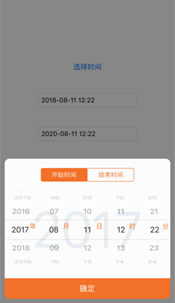IOS-線程操作之NSThread/NSOperation/GCD
編輯:IOS開發綜合
1NSThread.聲明線程,啟動線程:(第一個參數聲明了目標類,第2個參數聲明了目標方法,第3個參數為該方法的參數)
NSThread *thread=[[NSThread alloc] initWithTarget:selfselector:@selector(saleTicketMethod:) object:@"線程--1"]; [thread start];
2.IOS跟Android一樣都是線程不安全的 也就是所有UI更新都必須在主線程內完成,這樣,當我們在另一條線程中想要修改View,如下:
(第一個參數為目標方法,第2個參數為該方法的參數 ,並且只能是1個 。)
[self performSelectorOnMainThread:@selector(updateView:) withObject:str waitUntilDone:YES];
3.當不同的線程搶奪共同的資源時,需要對線程加鎖,以下為一個賣票的系統例子:
#import "CSZViewController.h"
@interface CSZViewController ()
{
int _ticketNum;
NSLock *_lock;
}
@end
@implementation CSZViewController
- (void)viewDidLoad
{
[super viewDidLoad];
}
- (void) updateView:(NSString *) text
{
NSString *str=[NSString stringWithFormat:@"%@ \n%@",self.textView.text,text];
self.textView.text=str;
}
- (void)saleTicketMethod:(NSString *)threadName
{
while (true) {
if (_ticketNum>0) {
[_lock lock];
NSString *str=[NSString stringWithFormat:@"%@線程的票數為:%d",threadName,_ticketNum];
[self performSelectorOnMainThread:@selector(updateView:) withObject:str waitUntilDone:YES];
_ticketNum--;
[_lock unlock];
if ([threadName isEqualToString:@"線程--1"]) {
[NSThread sleepForTimeInterval:1.0];
}else{
[NSThread sleepForTimeInterval:2.0];
}
}else
{
NSString *str=[NSString stringWithFormat:@"售票結束!%@",threadName];
[self performSelectorOnMainThread:@selector(updateView:) withObject:str waitUntilDone:YES];
break;
}
}
}
- (IBAction)threadClick:(id)sender {
_ticketNum=20;
//計算剩余票數
//如果有票,則賣出
//沒有則停止;
_lock=[[NSLock alloc] init];
NSThread *thread=[[NSThread alloc] initWithTarget:self selector:@selector(saleTicketMethod:) object:@"線程--1"];
NSThread *thread1=[[NSThread alloc] initWithTarget:self selector:@selector(saleTicketMethod:) object:@"線程--2"];
[thread start];
[thread1 start];
}
@end---NSOperation的使用是蘋果為我們實現多線程通過的一套簡潔的API。它為我們避免搶奪同個資源做了屏蔽。同時定義了線程隊列的概念,開發人員不用考慮這方面的東西。
其用法主要分為3點:
1,定義線程隊列 (設置同時運行的線程數,因為開線程也是需要消費資源的,類比JAVA的線程池)
NSOperationQueue *queue=[[NSOperationQueue alloc] init]; [queue setMaxConcurrentOperationCount:5];
2.定義異步線程 。(同樣,以下參數也是聲明了線程方法所在的類以及所需要的方法參數)
NSInvocationOperation *opera=[[NSInvocationOperation alloc]initWithTarget:self selector:@selector(operaSaleMethod:) object:@"線程操作1"]; NSInvocationOperation *opera2=[[NSInvocationOperation alloc]initWithTarget:self selector:@selector(operaSaleMethod:) object:@"線程操作2"];
3.將隊列放進線程中。線程任務就會通過隊列自動分配。
[queue addOperation:opera]; [queue addOperation:opera2];
4.對於操作的方法,使用同一資源,不需要做加鎖的處理
-(void) operaSaleMethod:(NSString *)threadName
{
while (true) {
if (_ticketNum>0) {
if ([threadName isEqualToString:@"線程操作1"]) {
[NSThread sleepForTimeInterval:2.0];
}else{
[NSThread sleepForTimeInterval:1.2];
}
NSString *str=[NSString stringWithFormat:@"%@線程的票數為:%d",threadName,_ticketNum];
[self performSelectorOnMainThread:@selector(updateView:) withObject:str waitUntilDone:YES];
_ticketNum--;
}else
{
NSString *str=[NSString stringWithFormat:@"%@售票結束!",threadName];
[self performSelectorOnMainThread:@selector(updateView:) withObject:str waitUntilDone:YES];
break;
}
}
}GCD是用C語言寫的支持多線程開發的一套 API,它的模式跟Operation差不多,並在此基礎上增加了組的概念,在所有組完成後提供一套觸發通知的機制。
1.定義隊列
//#define DISPATCH_QUEUE_PRIORITY_HIGH 2
//#define DISPATCH_QUEUE_PRIORITY_DEFAULT 0
//#define DISPATCH_QUEUE_PRIORITY_LOW (-2)
//#define DISPATCH_QUEUE_PRIORITY_BACKGROUND INT16_MIN
dispatch_queue_t queue=dispatch_get_global_queue(DISPATCH_QUEUE_PRIORITY_DEFAULT,0);2.定義組
dispatch_group_t group=dispatch_group_create();
3.定義異步任務並添加到隊列中
dispatch_group_async(group, queue, ^{
[self gcdSaleMethod:@"線程操作1"];
});
dispatch_group_async(group, queue, ^{
[self gcdSaleMethod:@"線程操作2"];
});4.隊列獲取通知
dispatch_group_notify(group, queue, ^{
NSLog(@"線程操作完成");
});
從日志可以看出 只有所有線程跑完了 才會回調該block中的內容
2014-08-11 15:08:38.982 ThreadSample01[5256:4007] 線程操作2售票結束! 2014-08-11 15:08:39.037 ThreadSample01[5256:1903] 線程操作1售票結束! 2014-08-11 15:08:39.042 ThreadSample01[5256:4007] 線程操作完成
相關文章
+



